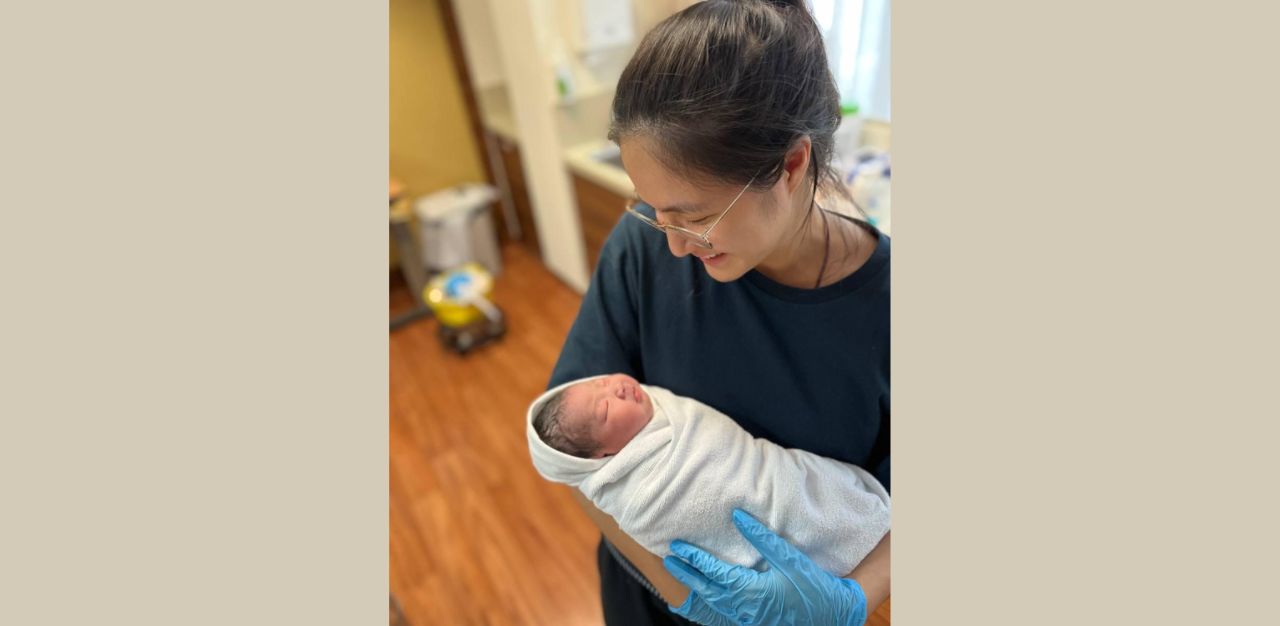For many women, their birth team may consist of their partner, doctors and nurses. Most of the time though, the partner might be clueless as to what is going on, and the medical staff are not always available throughout the entirety of the labour process — moving in and out of the hospital room as and when necessary.
Enter the doula, tasked to be at the birthing parent’s beck and call to provide continuous support throughout the labour process. In Singapore, doulas are typically women without formal obstetric training, who are employed to provide guidance and support to birthing parents before, during and after labour.
Doulas are relatively unheard of in Singapore and it is not known just how many doulas there are in Singapore, although the website doulas of Singapore lists about 37 independent doulas, and other sites list different companies in the country.
The biggest part of a doula’s job is empowering birthing parents and their partners — inclusive language that takes into account a diversity of genders — and making sure that they are heard throughout the labour process, says 25 year-old doula Gem Tan.
Not having had kids herself, her choice of occupation may seem rather odd to others. But for as long as she can remember, she’s always been drawn to the concept of family and motherhood, propelled by the strong women who brought her up — her mother and many aunts.
“I was raised on the shoulders of mothers. Now I empower people to become the shoulders their new families will stand on,” she says.
An unconventional series of decisions during her university studies, including taking an anthropology class titled Reproductive Technologies, pursuing a year-long capstone project entitled “Trying to Come to Term: Coping with Involuntary Pregnancy Loss in Singapore”, and taking up an internship with an anthropologist of childbirth and midwifery in the United States, which eventually exposed her to the concept of doulas.
At first, she doubted the practicality of pursuing such a career in Singapore and decided to work at a startup as a market researcher upon graduation. But finding little fulfillment at her job, she began to explore training to be a doula while keeping up with her full-time job. Undergoing the doula certification course by iBirth Professionals eventually cemented her decision to change careers, and she has not looked back since.
The biggest draw for her was the six-months mentorship programme, and knowing that she would be supported by experienced doulas throughout the steep learning curve.
“A big part of my insecurity was figuring out how to convince parents to let me into this very vulnerable, powerful and precious moment of childbirth when I myself had never had kids and have no work background in this field,” she says candidly.
Although she only began her mentorship last May, Ms Tan has now attended more than 25 births with Four Trimesters at the time of writing. She was certified in October.
A common misconception is that people who engage doulas are those who are looking for a natural or drug-free birth, but that’s not always the case, she says. “Many clients come to us just because they want to feel like they are heard, and want to walk away from the experience feeling good about themselves, knowing they’ve done the best for their families.”
During the Covid-19 pandemic in particular, doulas became a blessing for expatriates who were not able to get family support. These doulas provided both support and bridge to the medical system in a new country.
Working to improve the birth experience of parents
The main role of a doula comprises four parts and begins well before the labour process, Ms Tan says.
The first is an educator, going through all the options with the parents-to-be, including choosing between a home birth and hospital birth, the use of drugs during labour, and methods of induction before coming up with a birth plan.
“I don’t tell clients what to do, because ultimately, it’s their birth. They’re the ones making the decision about what’s right for them and the family. My job is to tell them the pros and cons of each option, and guide them to more resources if need be,” Ms Tan says.
“It’s also important to have a plan B, C and D before going into labour, because it’s very easy for things to cascade out of control during labour. And it’s easy to be pushed into one direction when clients are vulnerable, when there are actually multiple directions that a birth can go,” she adds.
The second role is providing physical support. At Four Trimesters, doulas teach parents how to perform certain exercises that help during labour, if labour stalls or when contraction patterns are irregular. During the actual labour process, they actively help with these exercises and suggest different positions to go into labour in, as well as offer massages and counter pressure to help the birthing parent get comfortable and give them time to rest. Labour is a marathon, not a sprint, so pacing is really important, she stresses.
The third is doulas provide emotional support. “Many people don’t realise that clients need different things. Some clients need more physical support, others more emotional support. Labour can bring about a lot of fear in the parents, so we talk them through these fears and give them reassurance that they’re doing just fine,” says Ms Tan.
The last role is advocacy, which means making sure that the clients are heard and that the entire birth team is on the same page. “As a doula, I don’t work for the hospital or the doctor. I work for my client. But at the same time, I’m thinking about the dynamics of the whole team and making sure that we work together smoothly for the benefit of the client,” she says.
Doulas also provide postpartum support for about six weeks to help new parents adapt to life with a newborn and guide them with breastfeeding.
The challenges of an on-call life
As the adage goes, with great power comes great responsibility. Ms Tan is on call for her clients from the 37th to 42nd weeks of their pregnancy. Because she has an average of 4-5 clients a month, this works out to being on call almost all the time. Being on call 24/7 means that doulas aren’t always able to make plans in advance. Ms Tan deals with this by giving her friends and family a disclaimer that she might have to postpone their plans on the day itself.
Ms Tan admits that the hardest parts of working as a doula is over important dates like loved ones’ birthdays or the holidays when family and friends get together. “In 2021, I worked over Christmas and last year, I was praying hard to celebrate Christmas. I had that day off, but not one day more. I got called to a birth on Boxing Day at 4.45am,” she says.
Being a doula also means that she’s privy to moments of stress or trauma, such as injuries during birth, or when parents are overwhelmed and they break down. “In these moments, all I can do is provide support as much as I can. But I remind myself that I can’t fix everything or protect everyone from trauma and ultimately, it’s their journey to go through. Sometimes things are beyond you, and you just have to reconcile that fact with yourself,” she says.
A day in the life of a doula
Although everyday may be different for doulas, here’s how a typical day for one might look like:
3am: I get a call from my client that she’s in labour. All my clients know that my phone is on “do not disturb” mode after 10pm so a call means that they’re either anxious or ready to head to the hospital.
I chat with the mum and find out that her contractions are about eight minutes apart and her water bag is leaking. I reassure her and tell her to rest, to call me again if she has any further updates or wants to go to the hospital.
I try to go back to sleep, but I’m a light sleeper so I just lay in bed and try to get as much rest as I can.
5am: I get another call and this time it’s usually from the partner who’s saying it’s time to go to the hospital. I roll out of bed, brush my teeth, wash my face, pack and I have my version of the birth bag ready. It is where I dump in my toiletries, some snacks and my water bottle and head to the hospital.
5.30am: I reach the hospital. Now it’s all about supporting the birthing parent and partner as much as I can. If I’m lucky, it’s a quick birth, if not it could be more than 24 hours. My longest birth was 59 hours.
9.15am: The client has been well into active labour for the past few hours. She’s sitting on a gym ball but she’s getting tired. I look at her contraction reading on the monitors and realise the last few contractions have been irregular: two to four minutes apart and 50 to 70 seconds long. That tells me the baby may be engaging with their mother’s pelvis in an awkward angle, so we do some exercises from the Optimal Maternal Positioning’s reversing protocol to reposition the baby. The contractions space out to every four minutes apart and the client is able to get a longer break between surges.
11.05am: My client starts to despair that this baby will never come. Both her partner and I reassure her that she’s doing amazingly well, and I remind her to take it one breath at a time. She’s really struggling so I ask if she would like a cervical check to see her progress. She nods and we call for a nurse. Baby is low and she is 8cm dilated — two more centimetres to go! My client doubts she can wait that long and wants an epidural.
We have a quick discussion: The biggest drawback with administering the epidural is she would be confined to the bed. I ask her if she would like to try labouring in the shower to see if that will help. We help her into the shower and I shower her back with warm water, while her partner massages her lower back. She loves it and instinctively labours on her hands and knees. I see her enter her “zone” and soon, she’s starting to sound pushy. She’s getting really close.
12.30pm: Baby is born! My favourite part of birth is getting to witness the moment a newborn baby is put onto the mother’s chest. No matter how tired a birthing parent is, or how intense the birth was, all that melts away and you see this expression of pure bliss and love on their faces.
As a doula, you’re a witness to this rite of passage and it’s such a privilege to be a part of that beautiful moment.
1pm: I stay to help with the first feed and give the new parents as many tips as possible. There’s a huge misconception that breastfeeding is easy, but it’s a true skill that needs to be learnt for many mother-baby dyads. One thing to note though, you’re not supposed to be in pain the whole time.

3pm: I head home. If I can, I usually take shower and nap till dinner time.
7pm: Dinner, and I will probably go back to sleep again after dinner because I’ve been up since 3am. I’m on my feet most of the time and I’m doing a lot of emotional labour as well, so my mind and body are exhausted.
It’s like recovering from jet-lag, so I just go back to sleep again.
8am: I wake up the next day and have a prenatal or postnatal consultation for two hours. When I’m at birth, everything is put on pause because that’s my priority. If I have a prenatal or postnatal consult, I just text my clients to reschedule.
I’ll try to rest the next day, and if I feel well enough, I’ll go to my appointments. Everyday is different. Some days I have a lot more time and can help my boss with some research work or exercise or just chill.
Ms Tan has some words of advice: “Pick a good doctor, one whose philosophy of care aligns with yours. In highly stressful situations, you really want your doctor to be on your side. For example, if you’re aiming for as natural a birth as possible, ask questions such as how far will you let me go past my due date? What’s your caesarean rate? Will you let me labour off the bed?”
“Oh and attend childbirth classes and do your research,” she adds.
Join the conversations on TheHomeGround Asia’s Facebook and Instagram, and get the latest updates via Telegram.














